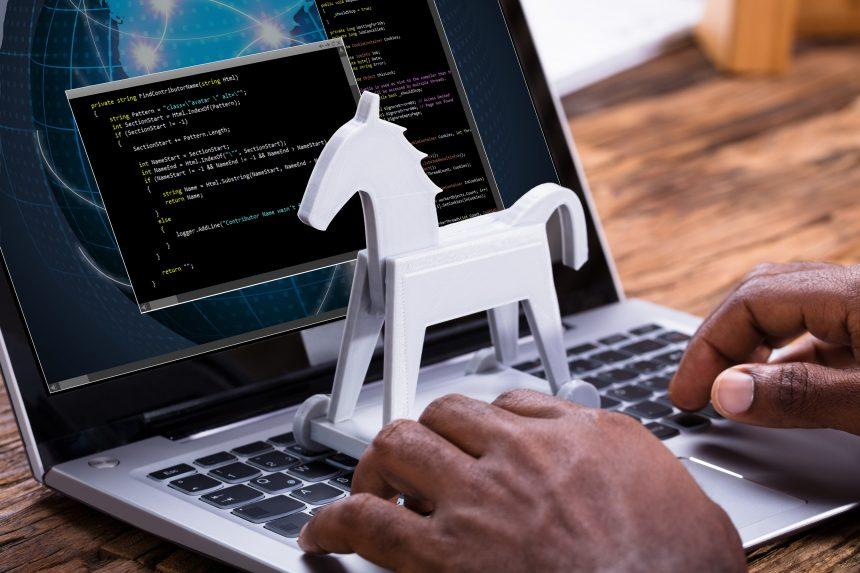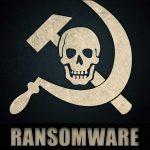Trojan horse malware, often referred to simply as “Trojans,” is a type of malicious software that disguises itself as legitimate or benign software to trick users into installing it on their systems. The term “Trojan horse” is derived from the ancient Greek myth, where a deceptive wooden horse was used to infiltrate the city of Troy. In the context of modern cybersecurity, these malicious programs often masquerade as useful applications or files, leading unsuspecting users to unwittingly grant them access to their systems.
Trojans can serve various purposes, from stealing sensitive information and executing unauthorized commands to creating backdoors for further exploitation. The insidious nature of these threats lies in their ability to infiltrate systems without raising immediate alarms, often leading to significant risks for both the infected device and the user.
Download SpyHunter Now & Scan Your Computer For Free!
Remove this and many more malicious threats to your system by scanning your computer with Spyhunter now! It’s FREE!
The PowerRat Trojan: An In-Depth Look
PowerRat is a specific variant of Trojan horse malware that exemplifies the dangers posed by such threats. Once it successfully infiltrates a system, PowerRat can perform a variety of malicious actions. Typically, this malware enters a computer through deceptive means, such as being bundled with legitimate software, sent as an email attachment, or distributed via compromised websites.
Once installed, PowerRat can execute a range of harmful activities, including:
- Data Theft: It can collect sensitive information, such as login credentials, credit card details, and personal data, which it sends to remote attackers.
- System Compromise: PowerRat can create a backdoor, allowing attackers to remotely control the infected system, potentially leading to further malware installations or data breaches.
- Ad Fraud: Some variants may display unwanted advertisements, redirect users to malicious websites, or use the infected system to generate fake traffic for revenue generation by the attackers.
The consequences of having PowerRat on your system can be severe, including financial loss, identity theft, and compromised personal information.
Symptoms of PowerRat Infection
Users should be vigilant for several signs that may indicate an infection by PowerRat or similar Trojan malware:
- Slow system performance or frequent crashes
- Unusual pop-up ads or browser redirection
- Unauthorized access to accounts or unusual account activity
- New or unknown programs installed on the system
- Increased network activity, especially when the computer is idle
Detection Names for PowerRat
To ascertain if PowerRat is lurking on your system, users can look for the following detection names in their antivirus or anti-malware tools:
- PowerRat
- Trojan.Agent
- Trojan.Generic
- Backdoor.Trojan
Similar Threats to Be Aware Of
While PowerRat is a significant threat, other similar Trojans include:
- Emotet: Known for its modular capabilities and ability to steal sensitive data.
- Zeus: Often used for banking credential theft and considered one of the most notorious Trojans.
- Agent Tesla: A keylogger and information-stealing Trojan that can capture various forms of sensitive information.
Comprehensive Removal Guide for PowerRat
Removing PowerRat from an infected system requires careful attention to detail. Here’s a step-by-step guide to assist users in the process:
Download SpyHunter Now & Scan Your Computer For Free!
Remove this and many more malicious threats to your system by scanning your computer with Spyhunter now! It’s FREE!
Step 1: Disconnect from the Internet
- Immediately disconnect your computer from the internet to prevent further data exfiltration or communication with the command and control servers.
Step 2: Enter Safe Mode
- Restart your computer.
- Before the Windows logo appears, repeatedly press the F8 key.
- Select “Safe Mode with Networking” from the menu.
Step 3: Use Anti-Malware Software
- Download SpyHunter.
- Scan for Malware:
- Open SpyHunter.
- Click on the “Scan” button to initiate a system scan.
- Allow the software to identify and list all detected threats.
- Remove Detected Threats:
- Review the scan results.
- Select PowerRat and any other threats for removal.
- Click on the “Remove” button to eliminate the threats.
Step 4: Manual Removal (If Necessary)
If any remnants of PowerRat remain after using SpyHunter, follow these additional steps:
- Uninstall Suspicious Programs:
- Go to Control Panel > Programs > Uninstall a program.
- Look for unknown or suspicious applications and uninstall them.
- Delete Malicious Files:
- Press
Windows + Rto open the Run dialog. - Type
%appdata%and press Enter. - Look for suspicious folders related to PowerRat and delete them.
- Press
- Edit the Registry (Advanced Users Only):
- Press
Windows + R, typeregedit, and press Enter. - Navigate to
HKEY_CURRENT_USER\SoftwareandHKEY_LOCAL_MACHINE\Software. - Look for entries related to PowerRat and delete them cautiously.
- Press
Step 5: Restore Browser Settings
- Reset your web browsers to remove any unwanted extensions or changes.
- Clear browser cache and cookies.
Step 6: Reconnect to the Internet
Once you have removed PowerRat, you can reconnect to the internet.
Preventing Future Infections
To safeguard your system against future Trojan infections, consider the following preventative measures:
- Keep Software Updated: Regularly update your operating system and applications to patch vulnerabilities.
- Install Reliable Security Software: Use a reputable anti-malware tool like SpyHunter to provide real-time protection.
- Be Cautious with Downloads: Avoid downloading software from unverified sources or clicking on suspicious email attachments.
- Educate Yourself: Stay informed about the latest cybersecurity threats and practices.
By taking these steps, you can significantly reduce the risk of encountering Trojan horse malware in the future.
Final Thoughts
If you suspect that your system is infected with PowerRat or similar malware, do not hesitate to take action. Download SpyHunter today to perform a free scan of your computer and safeguard your digital life.





